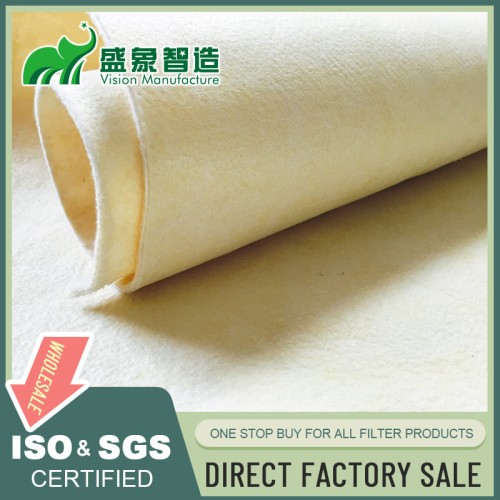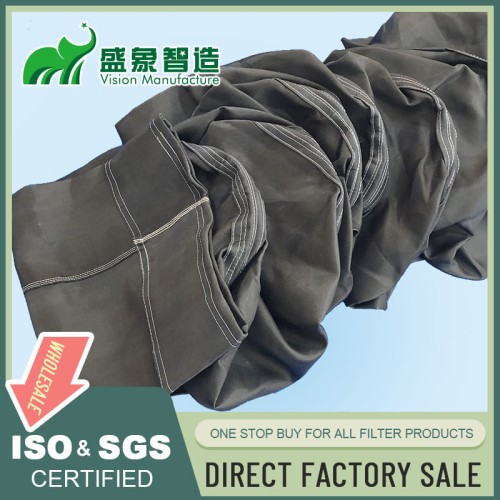
Maximizing Efficiency: The Ultimate Guide to Dust Collector Bag Replacement
Introduction to Dust Collector Bag Replacement
Dust collector bags are the unsung heroes of air quality management. In this guide, we delve into the nuances of dust collector bag replacement, unraveling the key aspects that ensure optimal performance.
|
No. |
Heading |
|
1 |
Introduction to Dust Collector Bag Replacement |
|
2 |
Understanding the Role of Dust Collector Bags |
|
3 |
Signs It's Time for Replacement |
|
4 |
Importance of Timely Replacement |
|
5 |
Types of Dust Collector Bags |
|
6 |
Key Features to Look for in Replacement Bags |
|
7 |
DIY vs. Professional Replacement |
|
8 |
Choosing the Right Dust Collector Bag Replacement |
|
9 |
Installation Tips for Maximum Efficiency |
|
10 |
Extending the Lifespan of Dust Collector Bags |
|
11 |
Common Mistakes to Avoid During Replacement |
|
12 |
Environmental Impact of Dust Collector Bags |
|
13 |
Comparing Various Replacement Options |
|
14 |
Innovations in Dust Collector Bag Technology |
|
15 |
Understanding Filter Efficiency |
|
16 |
FAQs About Dust Collector Bag Replacement |
|
17 |
Conclusion |
Understanding the Role of Dust Collector Bags
Dust collector bags play a crucial role in industrial settings, trapping particulate matter and preventing it from contaminating the air. Understanding their significance sets the stage for effective replacement strategies.
Signs It's Time for Replacement
Reduced Filtration Efficiency: When you notice a decline in the dust collector's ability to filter particles, it's a clear sign that replacement is imminent.
Visible Wear and Tear: Inspect the bag regularly for visible signs of wear, such as holes or fraying, indicating the need for replacement.
Increased Pressure Drop: A significant increase in pressure drop across the collector signals a clogged filter, necessitating a timely replacement.
Importance of Timely Replacement
Timely dust collector bag replacement ensures sustained filtration efficiency, preventing the release of contaminants into the air. It also contributes to the longevity of the entire dust collection system.
Types of Dust Collector Bags
Dust collector bags come in various filter fabrics, including woven and non-woven fabrics, fiberglass, and synthetic blends. Understanding the types helps in selecting the most suitable replacement.
Key Features to Look for in Replacement Bags
Filtration Efficiency: Choose replacement bags with high filtration efficiency to capture even the finest particles.
Durability: Opt for bags with durable materials to withstand the rigors of industrial environments.
Compatibility: Ensure the replacement bags are compatible with your specific dust collector model for seamless installation.
DIY vs. Professional Replacement
Deciding between a do-it-yourself replacement and hiring professionals depends on the complexity of the dust collector system and your expertise. Weigh the pros and cons to make an informed choice.
Choosing the Right Dust Collector Bag Replacement
Consider the nature of the dust particles, airflow requirements, and the operational environment when selecting replacement bags. A well-informed decision enhances the effectiveness of the dust collection system.
Installation Tips for Maximum Efficiency
Proper installation is paramount for the efficiency of dust collector bags. This section provides step-by-step guidance, ensuring a seamless replacement process.
Extending the Lifespan of Dust Collector Bags
Implementing proactive measures, such as regular maintenance and appropriate operation practices, extends the lifespan of dust collector bags, optimizing their performance over time.
Common Mistakes to Avoid During Replacement
Avoiding common pitfalls during the replacement process is crucial. Learn from the mistakes of others to ensure a smooth and error-free bag replacement.
Environmental Impact of Dust Collector Bags
Explore the environmental implications of dust collector bags, including disposal methods and the potential for recycling. Sustainable practices contribute to a greener industry.
Comparing Various Replacement Options
Comparing replacement options, such as different bag materials and configurations, provides insights into the most suitable choices for specific applications.
Innovations in Dust Collector Bag Technology
Stay abreast of technological advancements, including smart sensors and self-cleaning mechanisms, shaping the future of dust collector bag technology.
Understanding Filter Efficiency
Delve into the concept of filter efficiency, including MERV ratings and HEPA standards, to make informed decisions when choosing replacement bags.
FAQs About Dust Collector Bag Replacement
1. How often should dust collector bags be replaced?
Replacement frequency varies but is generally recommended every 6 to 12 months, depending on usage and environmental conditions.
2. Can I replace one bag at a time, or is it better to replace all bags simultaneously?
While individual replacement is possible, replacing all bags simultaneously ensures uniform performance and efficiency.
3. Are there specific maintenance tasks that can prolong the life of dust collector bags?
Regular cleaning, monitoring pressure drop, and addressing leaks can significantly extend the lifespan of dust collector bags.
4. Can I use a different material for replacement bags than the original ones?
It's recommended to use the same material, as specified by the manufacturer, to maintain the designed filtration efficiency.
5. Is professional installation necessary, or can I replace dust collector bags myself?
DIY replacement is possible for simple systems, but professional installation is recommended for complex setups to avoid errors.
6. Are there any health risks associated with delayed dust collector bag replacement?
Yes, delayed replacement can lead to increased emissions of harmful particulates, posing health risks to workers and affecting air quality.
Conclusion
In conclusion, dust collector bag replacement is a crucial aspect of maintaining a healthy and efficient industrial environment. By understanding the signs, choosing the right replacements, and following best practices, industries can ensure optimal performance and cleaner air.
Additional Resources:
· U.S. Environmental Protection Agency (EPA)
· World Health Organization (WHO)
· Occupational Safety and Health Administration (OSHA)


